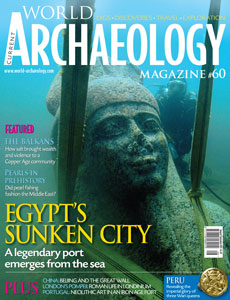The lost Egyptian cities of Thonis and Heracleion appear in the historical record but their whereabouts were long forgotten since disappearing beneath the waters of the Mediterranean 1,200 years ago. In fact, Thonis and Heracleion are the Egyptian and Greek names for the same city port that flourished for centuries at the mouth of the Nile Delta. It was here that Heracles first set foot on Egyptian soil, and here that Helen of Sparta and her lover Paris were blown ashore on their way to Troy. In the 4th century BC, the thriving emporium was eclipsed by Alexandria, and spiralled into decline. Finally, in the 8th century AD, Nature dealt the coup de grâce and this once-great city was lost beneath the waves. For centuries, fishes swam amidst the ruins; today, archaeologists do too. Franck Goddio and his team are mapping and excavating the site, recovering not only its stunning wealth of artefacts but also its rightful place in Egypt’s past.
Salt does not just make food taste better, it is an essential part of our diet – indeed, all animals depend on it. As such, it is was a highly coveted natural resource, bringing wealth to those who controlled it. Now, archaeologists have discovered the remains of a highly fortified settlement in the Balkans that dates back to the Neolithic, and which sits on the only major salt reserves in the region. Provadia-Solnitsata, in Bulgaria, was a hub of salt-processing activity through to the Late Copper Age – and may explain the origin of the huge riches discovered at the nearby necropolis at Varna on the Black Sea coast.
Our third feature combines archaeology with the written record to demonstrate the crucial role each played in revealing the challenges and triumphs faced by a growing population in pre-Colonial South Africa.
Who would guess that pearl-fishing played a pivotal part in the prehistory of the Arabian Gulf? Read how the chance find of a tiny single pearl bead in a Neolithic grave began an extraordinary voyage of discovery.
Another teaser: what happens when a prehistoric society takes over a landscape marked by the ancestral traces of a much older, and long forgotten, community? We go to Citânia de Breteiros in Portugal to find out.

